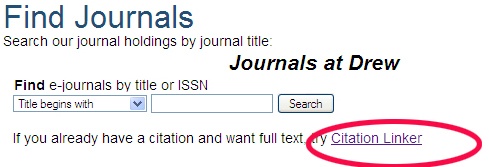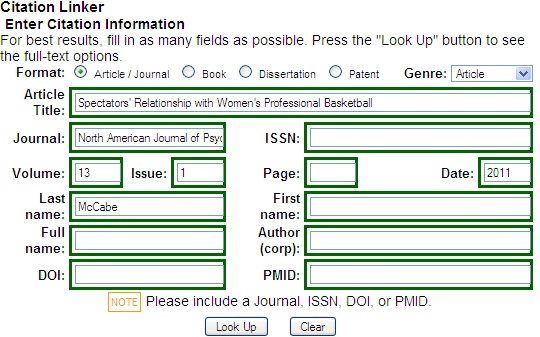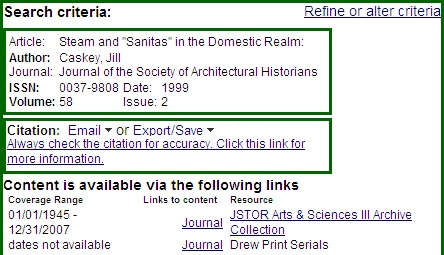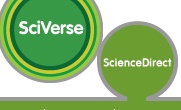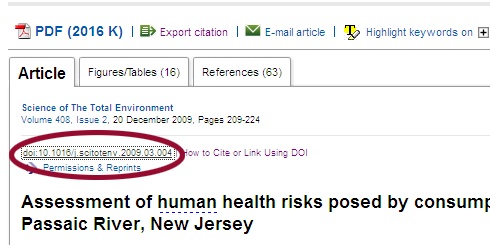...
- Have a citation to the article you want to link to, but don't have a link to the full text?-- If so, go to Starting with a Known Item Citation
- Have in front of you the full text of an article you want to link to? Skip to Once you're looking at the full text of the article
- Want to search to find articles relevant to your topic or course? Go to Searching for articles to link to
Anchor searching searching
Searching for articles to link to
If you don't have one or more citations/articles in mind to link to, you'll want to search one or more electronic resource databases to find articles. The Resources by Subjects pages on the Library website can help you find an appropriate database to search.
Once you've completed your search, use the "Article Linker" button to find the full text of the article. Then skip to Once you're looking at the full text of the article However, for expert advice, or if you just run into trouble finding an online version of the article you want, contact your reference librarian for help.
| Anchor | ||||
|---|---|---|---|---|
|
Starting with a Known Item Citation
...
...
If you know the citation for the article you want:
- Go to the Find Journals area on the library page: http://www.drew.edu/library/research/journals
- Click on "Citation Linker"
- Type in the citation information in the green box that comes up (you don't have to include the full title or page numbers)
- Click the Look Up button.
- If the Citation Linker finds the article, the results will be displayed:
- Note that there may not be a link directly to the Article
- Navigate to the article, either via the Article link, or by going to the Journal link and navigating to the article.
Anchor fulltext fulltext
Once you're looking at the full text of the article
...
What you do next depends on what vendor Drew is getting the article from. This chart shows the most common vendors:
...
If you see: | Do this: | ||
|---|---|---|---|
EBSCO | 1. Click on The Title of the Article | ||
JSTOR | 1. Right-click on View PDF. http://ezproxy.drew.edu/login?url=to the front of the link so it will work off campus. | ||
Proquestor | 1. Click on the title of the article. http://ezproxy.drew.edu/login?url=to the front of the link so it will work off campus, like this: | ]]></ac:plain-text-body></ac:structured-macro> | |
Science Direct | 1. Right above the title of the article, right-click on the link starting doi.. |
| |
Special Case: Artstor | 1. Select/Highlight your image on the search screen, then go to the Share menu and choose Generate Image URL: |
|
...

